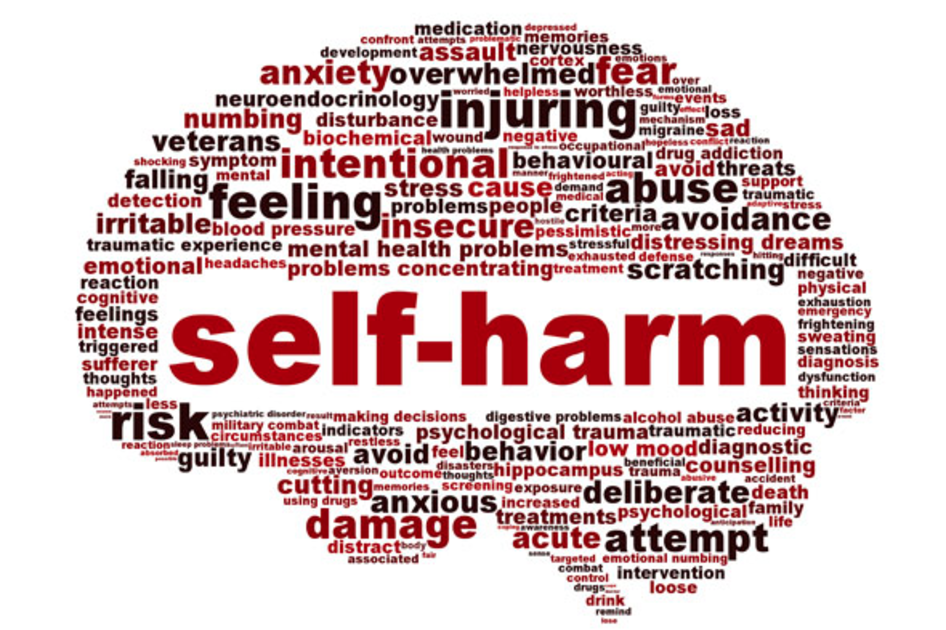
As an intern and psychiatric resident, I was presented with a myriad of psychiatric symptoms, with varying degrees of severity. The patients, as well as their disorders, came alive for me the more time I spent with them and the more my empathy grew. To better treat my patients, I needed to understand their points of view, and I tried to see the world through their eyes.
Depression and anxiety were easy to relate to, as we all have felt sad and worried at times. Hallucinations were made real when entering into a virtual reality dome at the American Psychiatric Association’s annual conference. However, self-injurious behaviors presented a challenge. I was hard pressed to understand what would drive someone to purposely inflict pain upon themselves, at times leaving permanent and disfiguring scars. It was only after spending seven years working on an adolescent inpatient unit populated with teenagers who have suffered unspeakable traumas, that I began to understand the depth of psychic pain which would cause one to go to any lengths to alleviate. Physical pain caused a distraction significant enough to momentarily suspend unwanted feelings and memories.
Self-harm is defined as the intentional, direct injuring of body tissue done without suicidal intent. This includes superficial scrapes by a paperclip, as well as deep gashes made with knives. Some individuals flaunt their scars with pride, and cut themselves on the wrists, face or forearms. Others hide their cuts by cutting themselves on the upper thighs, or even breasts or genitals, the latter being most worrisome. When questioned, many describe a build-up of pain to levels that they find intolerable, necessitating immediate release. After scratching or self-injuring, they experience a rush of euphoria, or relief, which is reinforcing and further perpetuating the cycle of behaviors.
There are many treatments for this which range from distraction, mindfulness, longer-term therapy and medication management. An immediate intervention that many appreciate is taking a marker or pen and drawing a design on the body part which they would otherwise inflict pain upon. Geometric patterns and butterflies tend to be favorites. Tactile stimulation is also a valuable technique, which includes taking a shower and allowing the water to run, soothing and relaxing muscles, running lotion or oils into the skin, or a gentle massage. For those who insist that they need a form of pain, chewing on an ice cube, or snapping a rubber band can provide a similar, relatively safe release of tension. Mindfulness, including relaxation exercises, and learning how to focus on physical stimuli can help one stay in the moment, and resist an urge to self-harm. Longer-term therapy, both group and individual, can elucidate different coping mechanisms and harm reduction techniques, as well as allow the patient to better understand their defense mechanisms, explore their motivations, learn introspection, and manage disquieting feelings.
The role for medications is more complex and multifaceted, centering on antidepressants to decrease sadness, anxiolytic medications to decrease panic and chronic worries, and even mood stabilizers or antipsychotics in extreme cases where there is an underlying bipolar or psychotic disorder, and to mitigate impulsivity.
Any person who inflicts harm upon themselves may be crying out for help, desire a release, or truly want to punish themselves. However, all self-injurious behaviors should be taken seriously, as many suicides are unintentional. Mental anguish is debilitating, and as painful as physical pain, if not more so. The role of the clinician is to understand the pain, isolate the underlying cause, mitigate the physical consequences, and empower the patient to overcome obstacles and manage their illness.
Pamela P. Siller, MD is a Board Certified Child, Adolescent and Adult Psychiatrist who provides medication management as well as individual and family therapy to children and adults. She maintains a
 Previous
Previous

